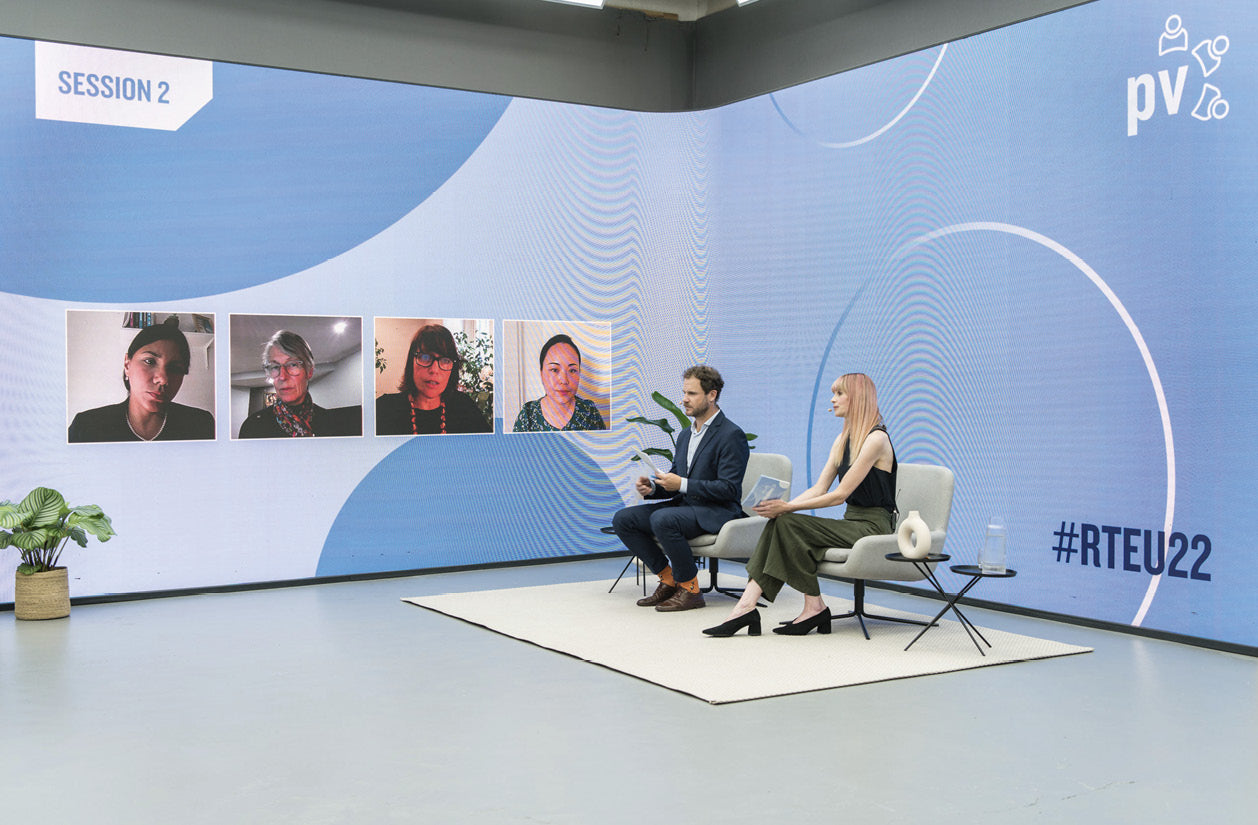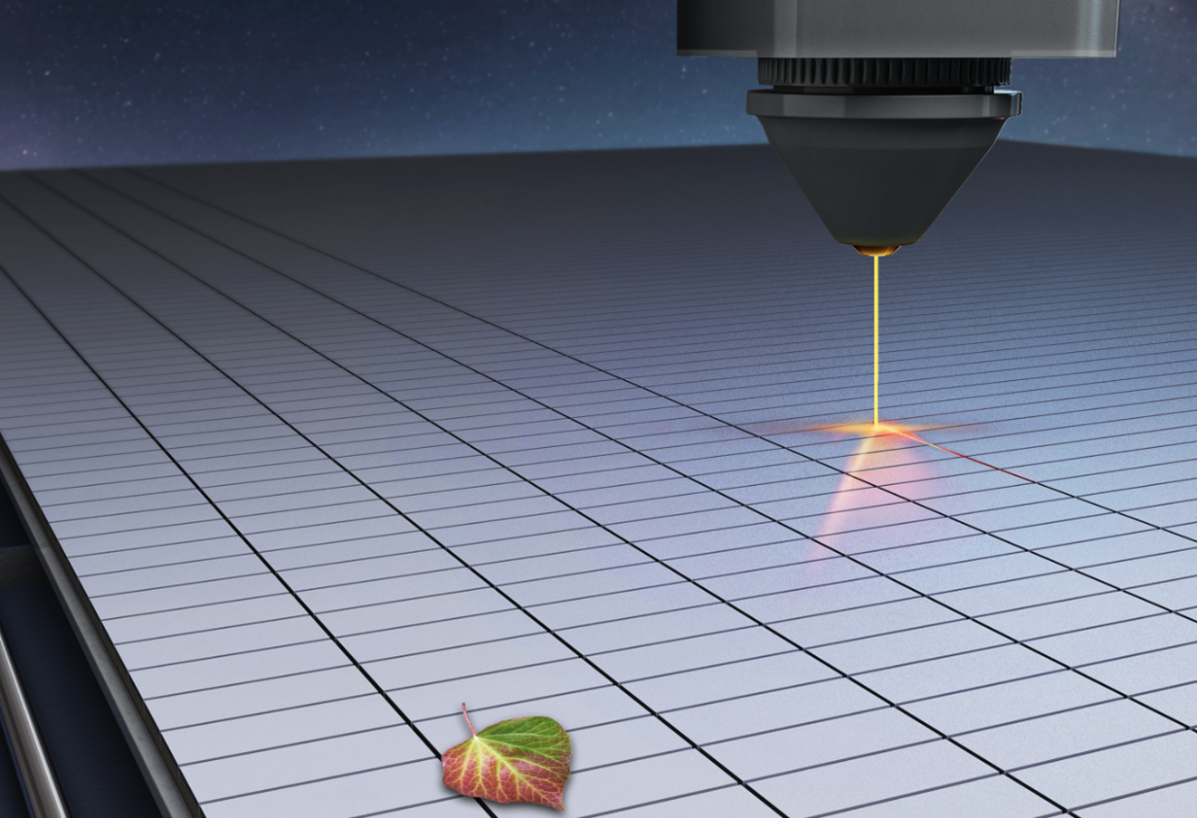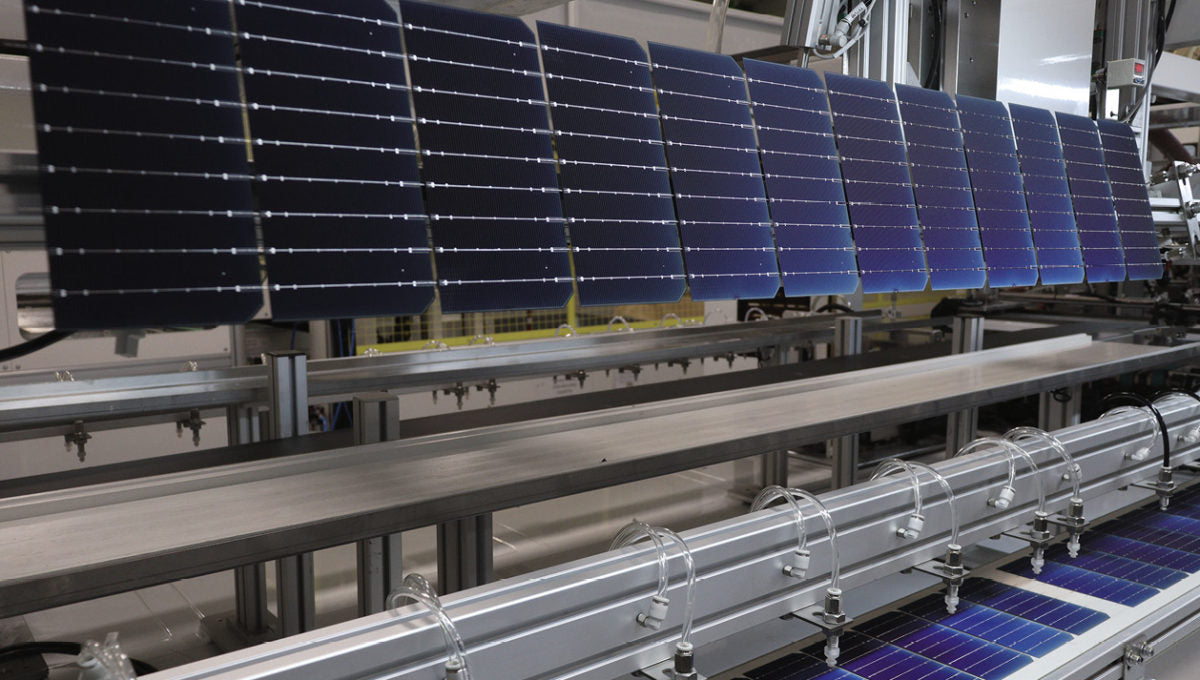https://www.pv-magazine-australia.com/2022/07/30/weekend-read-esg-in-action/
Weekend read: ESG in action

The pv magazine Roundtables Europe panel discussion on sustainability brought four experts together to discuss how the solar industry can meet ESG criteria by raising manufacturing standards.
Image: pv magazine, Stefanie Loos
From pv magazine 07/2022
As one financial expert recently put it, “ESG represents a fundamental change in the way we operate. This is its value, and the opportunities are enormous.”
Until now, corporate sustainability has been measured by the voluntary triple bottom line approach of people, profit, and planet. However, with the formation of the EU sustainable taxonomy, ESG or Environmental, Social, and Governance, a new framework has been devised to hold companies more accountable when it comes to their operations. For the first time, sustainability is being directly tied to their financial performance. And with new legislation that will come into effect over the next three years, they must comply.
Even “greener” industries like solar and storage, which may at first glance tick all the ESG boxes, will have to navigate the shift which will be challenging for many reasons, including the requirement to gather new data sets and grapple with a plethora of seemingly complex terminology.
During the all-female pv magazine Roundtables Europe panel discussion, four experts came together to discuss how the solar industry can meet ESG criteria by raising manufacturing standards. They were Adele Zhao, head of product solutions and marketing, Europe at Trina Solar; Inés Monroy, global business development and brand manager at Steag Solar Energy Solutions; Maria Franco, associate professor of circular economy at the Bern University of Applied Sciences; and Alison Lennon, chief scientist at Sundrive Solar and adjunct professor at the University of New South Wales. What follows is an excerpt from the discussion.
pv magazine: There appears to be confusion around the ESG rules that are coming in. Some say they require a fundamental change in how companies operate and that internal silos must be removed to gather the right data. How has Trina Solar navigated this?
Adele Zhao: As a company, it is difficult to fit everyone’s needs. First, we need to understand what problems we try to tackle together. Why are we doing it? In the ESG report, we set very clear goals. We don’t just show what we have achieved, but we also set the goals in the years to come, for example, for energy consumption and resource use.
As a project developer, how does Steag approach these issues?
Inés Monroy: There are three main pillars for a developer: responsibility, a deep understanding of local needs, and holding hands with whoever will be the future owner of the asset. The responsibility side is very important because as developers we have to make the most out of the available technology, so we have to ensure the assets will last for a long time. Secondly, there is a lot of effort invested in finding the correct location and obtaining the permits, licenses, and authorizations. The understanding of local needs requires communication, and the ability to engage communities and be ready to compromise.
The EU funded Circusol project is aimed at designing circular business models and processes for solar manufacturers. How can circularity help meet these new ESG reporting guidelines?
Maria Franco: Circularity speaks directly to the aspects that ESG tries to cover. Specifically, on the environmental side, when product manufacturers and stakeholders within the solar value chain can drive improvements across the entire product lifecycle, from product design up to the last stage of recovery and recycling, this makes them ready, at least in theory, for ESG disclosure. When we talk about product design, that entails design for repairability and the recycling of PV modules. For instance, minimizing non-reversable adhesives, modular product construction, and using no encapsulants.
We can also design for less material consumption in production as we scale up. Through your research, you have looked at sustainable solar manufacturing. How do you see PV cell and module manufacturing evolve in terms of this?
Alison Lennon: It is a very interesting time in PV manufacturing. People are realizing that PV is going to play a major role in decarbonization, and most PV manufacturers are critically looking at their supply chains to make sure they can sustainably produce materials.
With the cells, the materials that’s come into focus has been the use of silver. Most modules use silver for their cell metallization. With the current PERC technology, they currently use around 15 tons per GW of production. If you were to scale that to produce 1 TW, then you’re going to use up more than 50% of the world’s 2019 silver production. There are a number of solutions like using copper pastes and copper plating, so I don’t think it’s an insolvable problem.
If you move onto modules, they use a lot of glass and aluminum, and you need to think about those materials. Although aluminum is not in short supply, if you produce it by primary production – and we will need to do this because there are not enough modules to be recycled – the emissions that will be generated are quite substantial. It’s going to be critical for the aluminum industry to decarbonize quickly. Like silver, it’s not insurmountable, but it does need the industry to consider decarbonizing very quickly so that we can produce modules with low emissions.
Going forward, manufacturers will consider sustainability because it will affect their bottom line. It’s going to become expensive if you have to source a material that’s in limited supply because its cost is going to go up.
The full roundtable session can be viewed on the pv magazine YouTube channel:
This content is protected by copyright and may not be reused. If you want to cooperate with us and would like to reuse some of our content, please contact: editors@pv-magazine.com.
<




